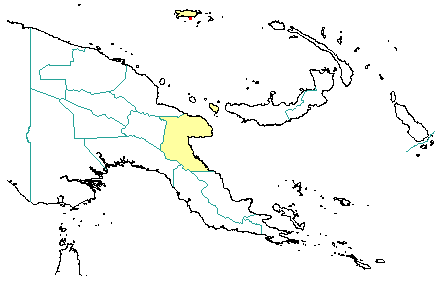
in PNGplants database
PNGTreesKey – Canarium decumanum Gaertn. |
Barry Conn (NSW) & Kipiro Damas (LAE).
Guide to trees of Papua New Guinea
Copyright held by the authors, National Herbarium of New South Wales, and Papua New Guinea National Herbarium
De Fructibus et Seminibus Plantarum Vol. 2: 99 (1791) Fig. 102.
Other Literature: P.W. Leenhouts, Flora Malesiana, Series 1, 276-277 (1956) Fig. 39-40.
Family: Burseraceae
Dicotyledon
Timber Group: Occasional timber species
Field Characters: Large canopy tree (25-30 m high); Bole cylindrical (50-150 cm); straight (bole 20-25 m long); buttresses buttresses present; spines spines absent; aerial roots aerial roots absent; stilt roots stilt roots absent; Bark grey, rough, scaly or flaky or pustular, lenticels irregular; Subrhytidome (under-bark) green; less than 25 mm thick, 5.0; bark blaze with two layers; strongly aromatic; pleasant (perfume-like); outer blaze white or yellow (pale (straw-coloured), markings absent, granular without splinters; inner blaze white, markings absent, fibrous; bark exudate (sap) present, colourless, not readily flowing (spotty), colour changing on exposure to air, to red (pale (slightly pink), sticky; terminal buds not enclosed by leaves.
Indumentum: Complex hairs absent; stinging hairs absent; mature twig indumentum (hairs) present, hairs dense.
Leaves: Leaves spaced along branches, spiral (leaves occurring singly at a node and arranged spirally up the branchlet), compound (a leaf made up from two or more leaflets); petiole present, not winged, attached to base of leaf blade, not swollen; leaves pinnate (unbranched with more than three leaflets); petiolule not swollen (very short); rachis present, absent, absent; leaves with a terminal leaflet (the number of leaflets odd - imparipinnate), broadest at or near middle or broadest below middle, 8.0-26.0 cm, 4.0-8.0 cm, leaflets opposite, symmetric; venation pinnate, secondary veins open, prominent, intramarginal veins absent; leaves lower surface green or brown (pale (because hairs reddish brown), upper surface green, indumentum (hairs) present, indumentum (hairs) dense; absent; domatia absent; stipules present, free, laterally placed, not encircling the twig, scale-like, not fringed, large, not persistent.
Flowers: Inflorescence axillary, flowers on a branched axis, cones absent; flowers bisexual, stalked, flowers with many planes of symmetry, 10.0 (c.) mm long, diameter small (up to10 mm diam.) (c. 10 mm diameter); perianth present, with distinct sepals and petals whorls, inner perianth yellow or green (yellowish green); 3, free; stamens 6, present, free of each other, free of the perianth; ovary superior, carpels joined (when more than one), locules 3; styles solitary, 1.
Fruits: Infrutescence arranged on branched axis, fruit 70.0-85.0 mm long, 45.0-60.0 mm diam., not spiny, non-fleshy, simple, indehiscent, drupe; seeds 1-2 (-3), much more than 10 mm long, not winged, irregular, seed 1-10 mm diam. (c. 10 mm diameter).
Distribution: Morobe (Cultivated) and Manus.
 | Botanical records in PNGplants database |